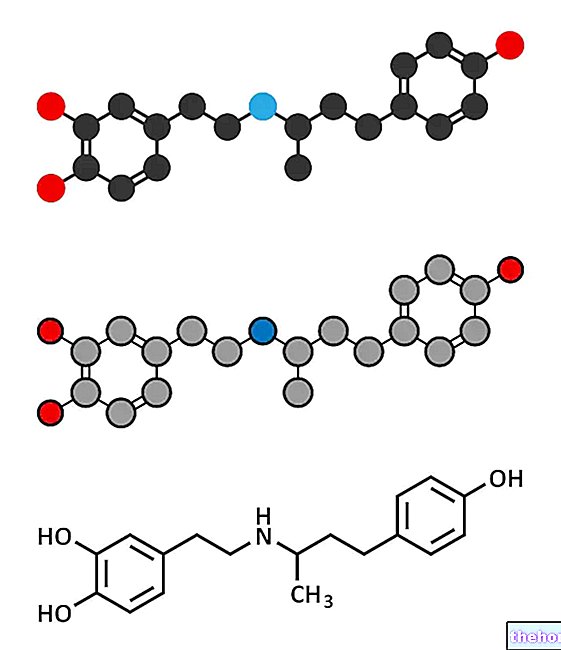
What is Intuniv - Guanfacine and what is it used for?
Intuniv is indicated for the treatment of attention deficit / hyperactivity disorder (ADHD) in children and adolescents aged 6 to 17 years for whom stimulants are unsuitable or do not provide adequate symptom control.
Intuniv is used in the context of a comprehensive treatment program, typically including psychological, educational and other measures.
The active substance of Intuniv is guanfacine
How is Intuniv - Guanfacine used?
Intuniv-based treatment should be started under the supervision of a physician who specializes in childhood and / or adolescent behavioral disorders. Before starting therapy, the physician should assess whether the patient is at risk for side effects, in particular sleepiness, changes in heart rate and blood pressure, and weight gain).
A careful determination of the dose of Intuniv is required, taking into account the undesirable effects and benefits observed in the patient. The patient should be monitored weekly at the start of treatment and continued to be monitored at least every 3 months during the first year .
The medicine is available as tablets (1, 2, 3 and 4 mg). The recommended starting dose for all patients is 1 mg taken by mouth once a day. For information on dose adjustments and necessary medical follow-up, see the Summary of Product Characteristics (SmPC).
The medicine can only be obtained with a prescription.
How does Intuniv - Guanfacine work?
How Intuniv works in ADHD is unknown. The active substance in the medicine, guanfacine, is thought to affect how signals are transmitted between cells in areas of the brain called the prefrontal cortex and basal ganglia by attaching to certain receptors that are particularly concentrated in these areas.
What benefit has Intuniv - Guanfacine shown during the studies?
Various studies have shown that Intuniv improves ADHD symptom scores (ADHD-RS-IV) in children and adolescents.
In a study involving 337 children aged 6-17 years, the reduction in ADHD symptoms on Intuniv treatment after 10-13 weeks was 24 points compared with the 15-point reduction seen with placebo (one treatment fictitious) and 19 points recorded in treatment with atomoxetine (a medicine used in the treatment of ADHD). In another study involving 312 adolescents between the ages of 13 and 17, the reduction in ADHD symptom scores after 13 weeks of treatment was 25 points with Intuniv and 19 points with placebo. Also two other studies Short-term studies in 631 patients showed that Intuniv, given in various doses, improved ADHD symptom scores compared to placebo.
Intuniv was also evaluated in terms of therapeutic failure (defined as worsening of ADHD symptoms or discontinuation of therapy by patients). As part of a long-term maintenance study involving 301 children and adolescents aged 6 and 17 years of age, treatment failure was observed in 49% of patients treated with Intuniv compared to 65% of subjects treated with placebo.
What is the risk associated with Intuniv - Guanfacine?
The most common side effects with Intuniv are sleepiness (seen in almost half of patients), headache (more than a quarter), fatigue (approximately 1 in 5 patients) and upper abdominal pain and sedation (which may both affect 1 in 10 patients. ). Somnolence usually occurs at the start of treatment and lasts for 2-3 weeks.
More serious side effects are less common and include lowering of blood pressure and weight gain (both seen in approximately 1 in 30 patients), slow heart rate (1 in 60 patients) and fainting (affecting less than 1 in 100 patients) .
For the full list of side effects and limitations, see the package leaflet.
Why has Intuniv - Guanfacine been approved?
The Agency's Committee for Medicinal Products for Human Use (CHMP) noted that stimulants are first-line therapies for ADHD and that these medicines lead to greater and more marked improvement in ADHD symptoms in a comprehensive therapeutic program. However, considering the benefits seen with Intuniv, the Committee concluded that the medicine can be used as an 'alternative in patients who cannot take stimulants or in patients for whom stimulants do not provide adequate symptom control.
The most important safety risks are slowing of heart rate, lowering of blood pressure, fainting, drowsiness and sedation. To control these risks, the CHMP recommended some measures, including periodic patient monitoring. .
The Committee therefore decided that Intuniv's benefits are greater than its risks and recommended that it be approved for use in the EU.
What measures are being taken to ensure the safe and effective use of Intuniv - Guanfacine?
A risk management plan has been developed to ensure that Intuniv is used as safely as possible. Based on this plan, safety information has been added to the summary of product characteristics and package leaflet for Intuniv, including the appropriate precautions to be followed by healthcare professionals and patients.
In addition, the company that markets Intuniv must provide healthcare professionals with nationally agreed information material before placing the medicine on the market. The material should contain information on undesirable effects, a checklist to help identify children at risk, and a checklist and chart for monitoring pediatric patients during therapy.
Further information can be found in the summary of the risk management plan.
More information about Intuniv - Guanfacine
For more information about Intuniv therapy, read the package leaflet (included with the EPAR) or contact your doctor or pharmacist.
The information on Intuniv - Guanfacina published on this page may be out of date or incomplete. For a correct use of this information, see the Disclaimer and useful information page.




























